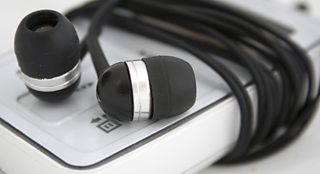Have A Conversation
If you want to have a conversation that will become part of the Listening Project you will need to have your conversation recorded through one of the local Βι¶ΉΤΌΕΔ radio stations participating in The Listening Project. A full list of the stations involved is .
If you want to have your own Listening Project-style conversation at your kitchen table at home don't be put off if you’ve never recorded anything before. All you need is a computer, laptop, camera, mp3 player or phone with a microphone.
And don't worry about whether your conversation is suitable for the Listening Project – there’s no right or wrong way to have a conversation. Both the Βι¶ΉΤΌΕΔ and the British Library are keen to hear from as many people as possible.
Preparing for your conversation
Who would you like to have a conversation with? Think of a person whose stories you would like to hear, or someone who might like to ask about yours, such as a grandparent, sibling, or close friend.
Think about any topics you would like to cover in your chat and make a list of possible questions to get you started.
Choose a device to record your conversation. You need something that will record your conversation and save it as an audio file.There are several tools you could use that you probably already have access to:
1 - Computer
It’s likely you have a computer with a built-in microphone, which will allow you to record with free (or free to try), online audio software like Audacity, Free Studio or Sound Forge. Apple computers should already have the audio software GarageBand pre-installed.
If you have an external microphone we suggest you plug it in, but if not the built-in mic should work fine.
2 - Mobile phone
Most smart phones have the ability to record and output mp3s. If you're recording on a phone, make sure the battery is fully charged and turn off any features that could interrupt the conversation, such as text alerts, alarms and the phone feature.
3 - MP3 Players
Some MP3 players (such as later generation iPods) have built in voice recorder functions, whilst others can be turned into a digital recorder using a microphone attachment.
4 - Digital cameras
Many digital video and stills cameras can also be used to record audio.
Where should I have the conversation?
Pick a quiet place where you and your loved one can sit and relax for 15-30 minutes without any interruptions. A carpeted room is best.
Make sure there’s nothing nearby that could create background noise, such as a fan, phone or ticking clock.
Take off any rings or jewellery that might create noise.
Position your recording device at an equal distance between you and the person you’re talking to, and as close to the two of you as you can.
Check the sound levels first by making a short test recording and playing back the sound. If it sounds distorted, you’re either too near the microphone or the sound level is turned up too high.
Once you're set up, press record and start your conversation.
How do we start the conversation?
Make sure that you have permission to record the conversation from all parties involved.
Start the conversation with basic information by stating your name, your age, the date, and the location of the interview. For example, “My name is John Smith. I’m forty years old. The date is November 27, 2011, and I’m sitting with my grandfather, Frank Smith, in his living room in Salford.” Then ask your conversation partner to do the same.
Remember, the questions you prepared in advance are just suggestions. If something interests you, ask more about it. We’ve found that 20-30 minutes is a good length of time for a conversation, but you can talk for a shorter amount of time if you like. Unfortunately we are unable to accept conversations that are any longer than half an hour.
Try to be yourself; you can laugh or even cry during the conversation.
Some emotional questions like “how does this make you feel?” often elicit thoughtful responses so don’t be afraid to ask.
Before you turn off the recording device, ask your conversation partner if there is anything else he or she wants to talk about.
Finally, hit stop on your recording device and save the conversation.
How can I share my conversation with my friends and family?
If you would like to share your conversation with friends and family there are a number of audio sharing websites that you could use.
Free media-sharing websites such as Soundcloud, Audioboo, Mixcloud and Youtube allow you to easily upload and share digital audio or video recordings. Social networking websites like Facebook also host audio applications that allow you to upload and share your conversations.
Please note, only conversations recorded by the Βι¶ΉΤΌΕΔ will be eligible to be considered for broadcast and publication by the Βι¶ΉΤΌΕΔ and archiving by the British Library.
-
![]()
Creative animations of some Listening Project conversations
-
![]()
Subscribe to this programme or download individual episodes.


